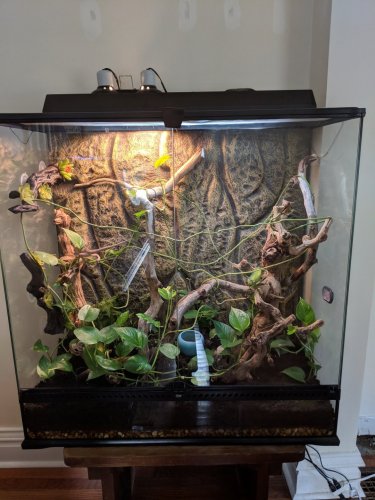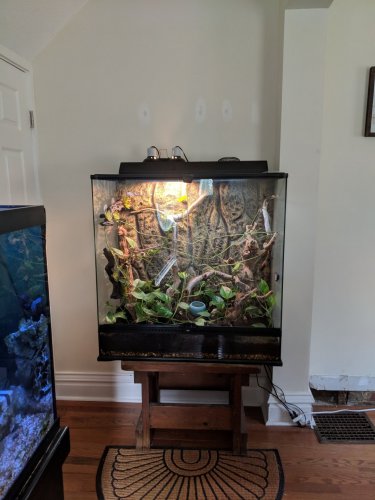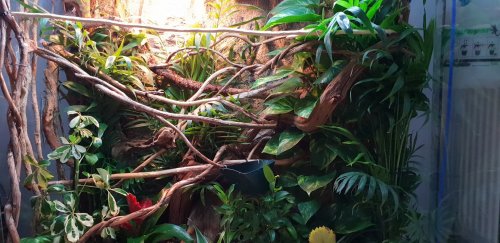So a recent thread about plant issues brought up a unique way of fertilizing plants in enclosures. I'd love to hear what you are doing to provide for the plants! I mean, we are all gardening at the same time as keeping reptiles and amphibians if we choose to incorporate live plants, so how do you make them thrive?
Of course lighting and moisture are key, and I'd love to know what works best for you, and I am aware that many of us swap plants out to increase success, and there are some who even have bio-active set ups that create totally different circumstances, but how do you provide for your plants nutrients?
Lets see some of the great techniques that you are using to get the best results!!!
Of course lighting and moisture are key, and I'd love to know what works best for you, and I am aware that many of us swap plants out to increase success, and there are some who even have bio-active set ups that create totally different circumstances, but how do you provide for your plants nutrients?
Lets see some of the great techniques that you are using to get the best results!!!







